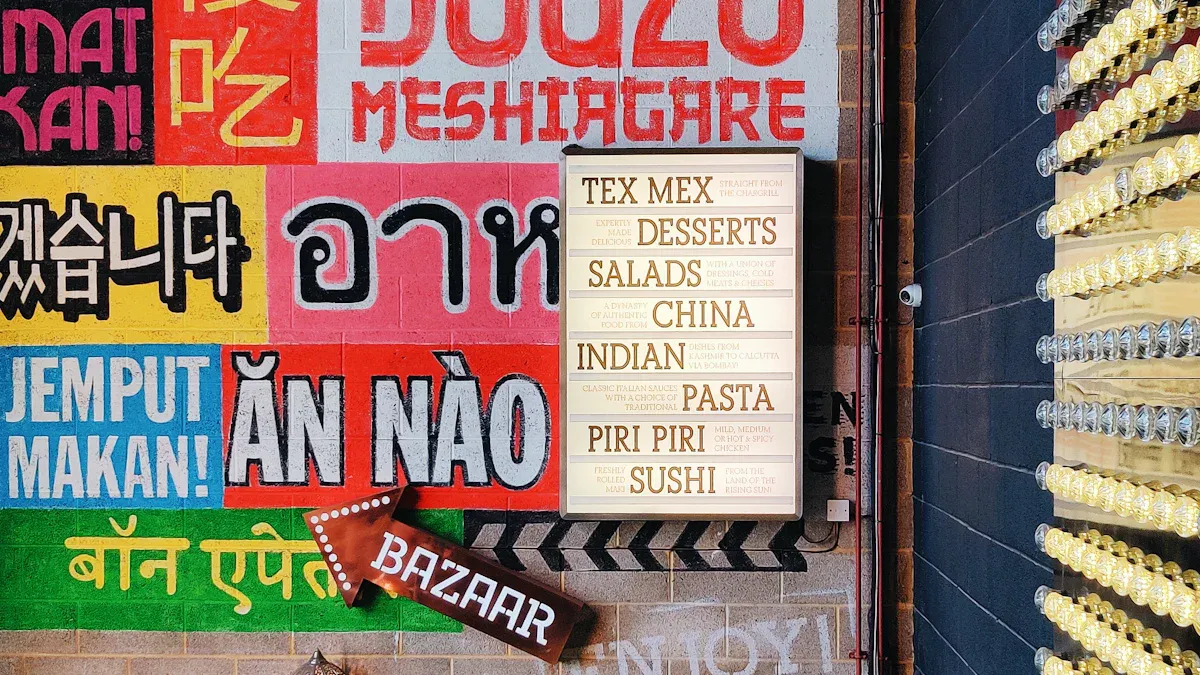
Imagine seeing an ad in your own language—it makes you feel like the brand truly understands you, which can increase your trust in that brand. With .Multilingual ad screen support, you can display ads in multiple languages, often using automatic language detection. According to CSA Research, 72% of people prefer product information in their native language. This approach not only helps more people make purchases but also enhances the overall audience experience. The chart below illustrates how .Multilingual ad screen support improves ad performance and reduces bounce rates across different countries:
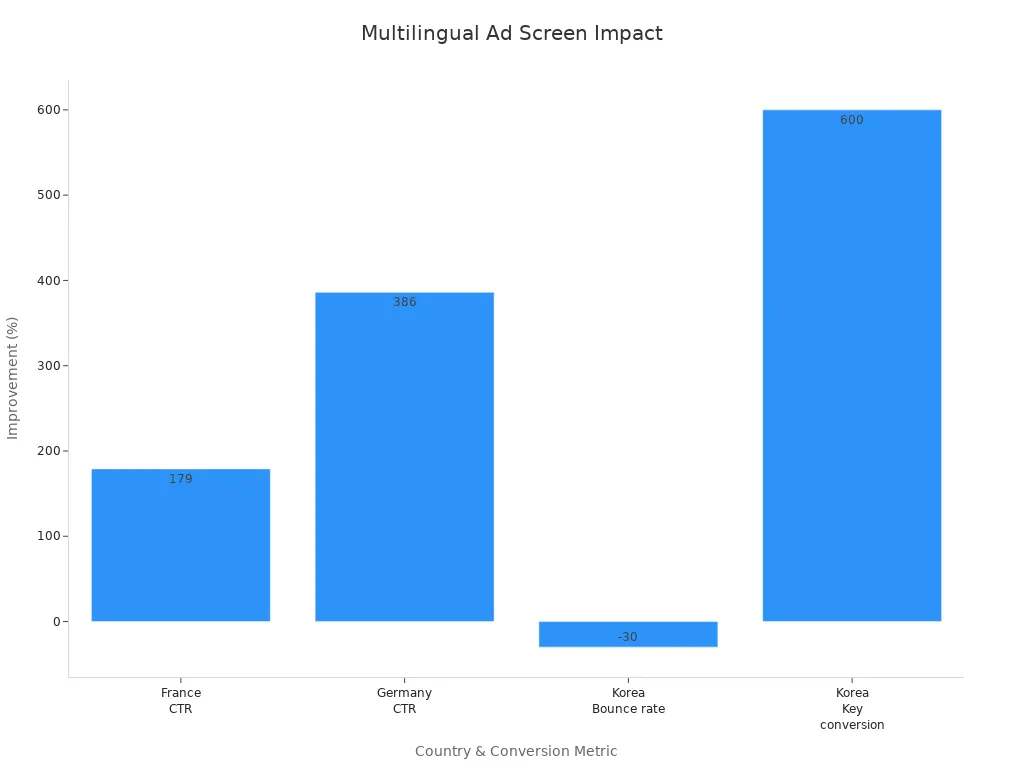
Beyond just better numbers, .Multilingual ad screen support allows you to connect with your audience on a deeper level and demonstrate respect for their culture—an essential factor in successful global advertising.
Key Takeaways
Multilingual ad screen support lets ads show in many languages. This helps you reach more people with just one campaign. Using ads in the audience’s own language builds trust. It also gets more people interested and helps sales in other countries. Pick the right languages for your ads. Change your ads to fit local cultures. This makes your message clear and polite. Test your ads with people who speak the language. Update your ads often to fix mistakes and keep them new. Use analytics and feedback from users to make your ads better. This helps you connect more with your audience.
Multilingual Ad Screen Support
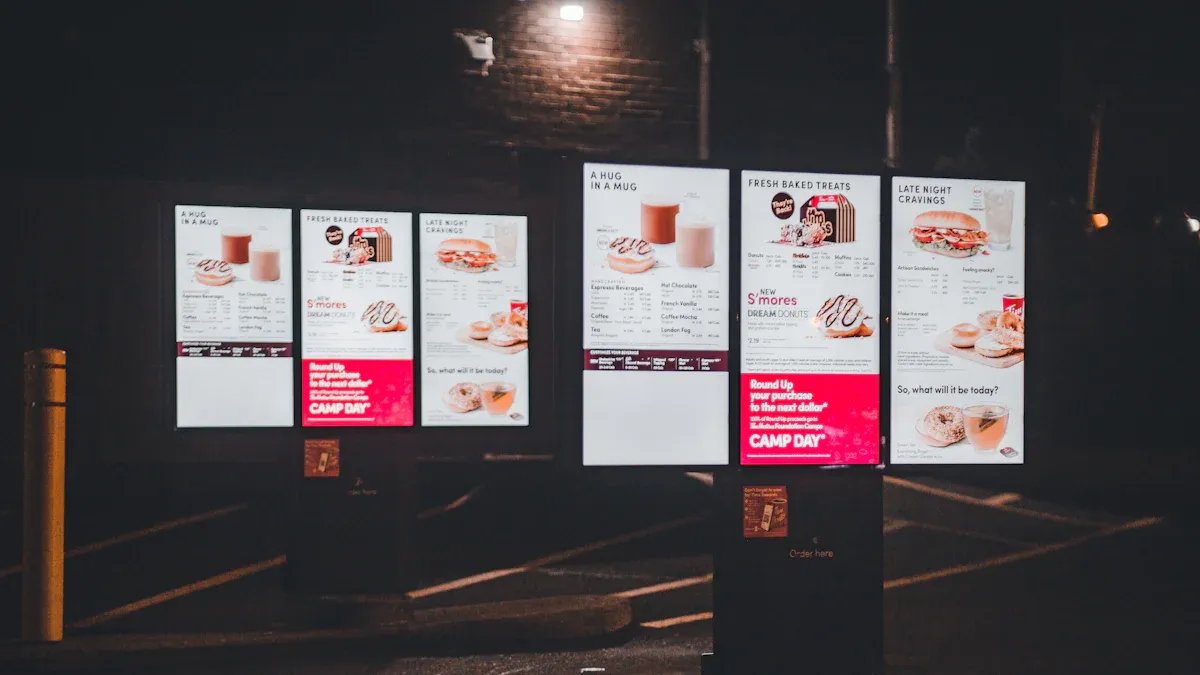
Definition
You should know what .multilingual ad screen support is before using it. This feature lets you show ads in many languages on screens, websites, or apps. You can reach people who speak different languages with one campaign. You do not need to make a new campaign for each group.
With .multilingual ad screen support, technology finds out what language your audience likes. The system shows the ad in that language. This uses automatic language display and language detection. You do not have to guess the language your viewers want. The system chooses for you.
Tip: Automatic language detection stops mistakes that happen when you pick languages by hand. This makes your ads more correct and personal.
You can use .multilingual ad screen support for many kinds of ads. Digital billboards, store screens, apps, and websites all use this feature. You can show your message in the right language at the right time. This helps you reach more people and get better ad results.
Platforms
There are many platforms that help with multilingual ads. Each one gives you tools to manage ads in different languages. Here are some popular choices:
Google Ads: You can make campaigns in many languages. The platform uses user data to show the right language.
Facebook Ads: This platform lets you upload ads in different languages. It shows the right ad based on the user’s profile.
Programmatic Advertising Platforms: These use data and automation to show ads in the right languages on many sites and apps.
Digital Signage Software: Many store and outdoor screens use software that supports .multilingual ad screen support. You can set rules for language display by location or audience.
Platform Type | Multilingual Feature | Best Use Case |
|---|---|---|
Google Ads | Language targeting, auto-detection | Search and display advertising |
Facebook Ads | Multiple language ad versions | Social media advertising |
Programmatic Platforms | Automated language delivery | Broad digital advertising campaigns |
Digital Signage Software | Location-based language rules | In-store and outdoor advertising |
Pick a platform that fits your goals and audience. Some platforms have smart language detection. Others make it easy to manage your content. Always test your ads in every language to make sure they look and sound good.
Note: Using .multilingual ad screen support on different platforms keeps your message the same. You can reach more people and make your ads work better.
Benefits
Global Reach
You can show ads to people all over the world. Multilingual ad screen support helps you reach new markets. You can get more customers by using many languages. These campaigns connect with people who do not speak English. About 41.2% of web users use other languages. If you use their language, you show respect for their culture. This helps build trust with your audience.
People stay longer when ads use their language. They interact more and buy more often. A Meta study found that local ads work better. Impressions went up by 83%. Revenue grew by 70%. Purchases increased by 36%. These numbers show that multilingual ads help brands do better worldwide.
Consumers are 65% more likely to buy when product pages use their own language.
Engagement
Multilingual ads make your message more interesting. Localized marketing gets more clicks and keeps users engaged. The table below shows how localization helps important engagement numbers:
Metric | Insight |
|---|---|
Click-Through Rate | Localized content gets more clicks than simple translation. |
Bounce Rate | Lower bounce rates mean users like the content more. |
Pages per Session | Sites with localized content get more page views per visit. |
Time on Page | Users spend more time on pages in their language. |
Users react better to ads in their language and culture. This means more clicks, longer visits, and more conversions.
Cost Efficiency
Multilingual ads help you save money and get better results. Localized campaigns cost less per click and convert more. The chart below shows that localized ads work better than English-only ads:
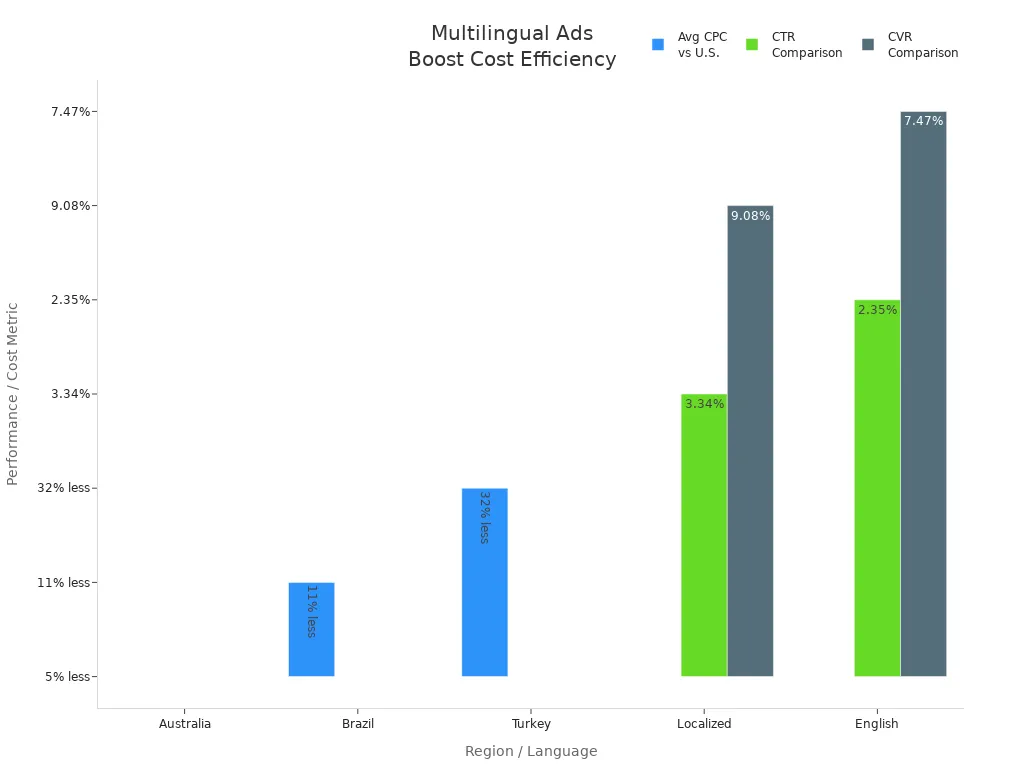
For example, ads in Turkey cost 32% less per click than in the U.S. Localized ads get a 3.34% click-through rate. English ads get only 2.35%. About 86% of localized campaigns do better than English-only ones. Many big companies use translation for higher profits. You can get more leads and conversions for less money with multilingual ads.
Multilingual Marketing
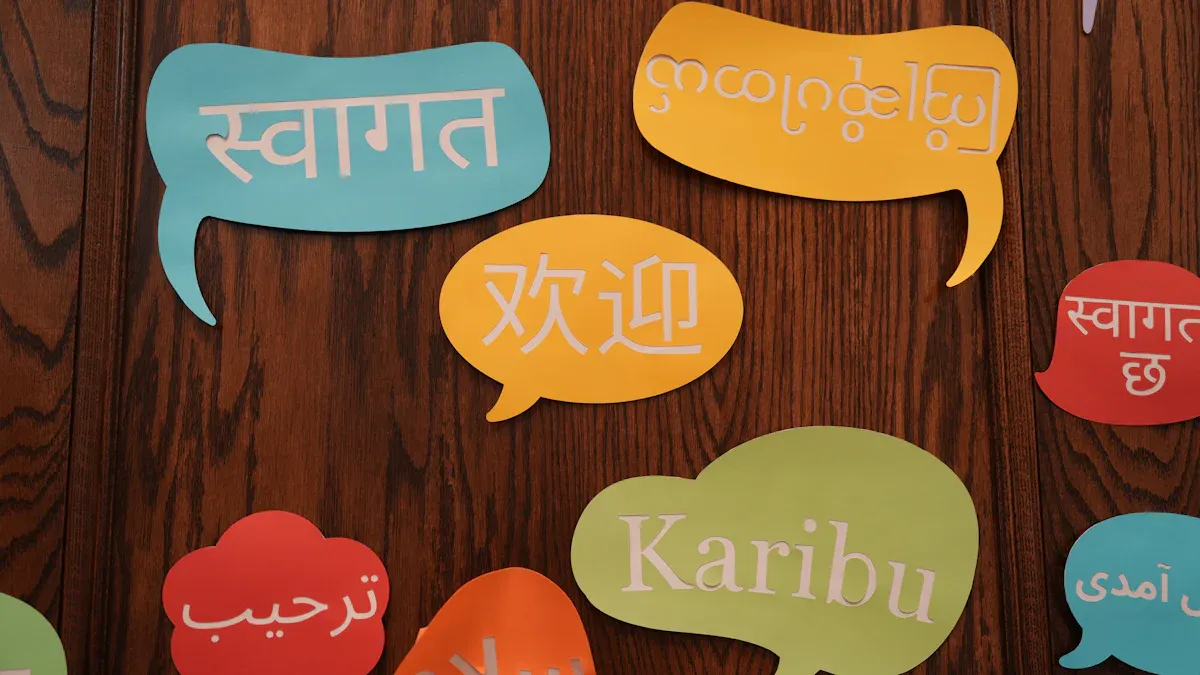
Content Creation
You need a good plan to make content for multilingual marketing. First, learn about your audience. Demographic research tells you about age, gender, income, education, and where people live. This helps you choose languages and the best places to show ads. Young adults in cities may like bilingual ads. Older people may want ads in their own language.
To make strong multilingual content marketing, follow these steps:
Use transcreation, not just translation. Change the tone and feeling to fit each culture.
Work with people who speak two languages or are native speakers. They help your brand sound real and honest.
Make your ads for mobile phones first. Change layouts for different text sizes and reading ways.
Split your audience by more than language. Think about what they like, how they act, and what they need.
Follow local laws and rules, like GDPR and language labels.
Check and update your content often. People should review it to avoid mistakes and keep up with culture.
Use multilingual SEO. Add hreflang tags and find local keywords to help more people find you.
Watch important numbers like conversion rates and bounce rates for each language and place.
Localize more than just words. Change images and user interfaces to fit the local culture.
Do not only use machine translation. Always have people check for mistakes and the right style.
Tip: Test your ads with real people from your audience. Their feedback helps you fix problems and make your marketing better.
Localization
Localization is more than just translating words. You must change your ads to fit each culture’s habits and what people expect. Start with clear talks. Share your goals, scripts, and brand ideas with your localization team. This helps them know what you want and change your ads the right way.
Here are some best practices for localization:
Let your team use transcreation. This helps your ads make the right feelings in each culture.
Change your design and layout to match what local people like. Use pictures and styles that feel normal to them.
Watch out for cultural taboos and visual language. Gestures, colors, or clothes can mean different things in each place.
Use local experts to check your ads. They make sure your ads feel right and do not have mistakes.
Plan your ads so they work in many cultures. Pick colors, actors, and ideas that fit everywhere.
Change your content for local details. Adjust tone, formality, dates, money, and time as needed.
Think about the type of ad. For videos, decide if you need dubbing or subtitles. For digital ads, keep your words short and clear.
Market research is very important for localization. Learn what your audience needs, what they care about, and how much they can spend before you change your ads. Do not use the same ad for everyone. Make your marketing fit each culture to build trust and loyalty.
Note: Many brands have made mistakes with localization. For example, Coca-Cola once got its name wrong in China, which hurt its image. Careful planning and local help can stop these problems.
Pick your marketing channels based on how your audience uses media. Use demographic facts to match language with platform habits. Mix digital, traditional, and social media to reach more people and get more engagement.
Localization helps you connect with your audience and makes your ads work better. When you change your marketing for local cultures, you build stronger bonds and get better results.
Key Considerations
Language Selection
Picking the right languages helps your ad campaign do well. You need more than just translation. Begin with market research. Find out what your audience likes and needs. Use tools like Google Analytics to see where visitors come from. Study how people shop and what they want. This shows which languages are most important.
Look at local culture and how people buy things.
Check the laws in each place.
Choose search engines that people use in your target areas.
Do keyword research in many languages to avoid mistakes.
Use language and location targeting to reach the right people.
Always match your ad translation to the audience’s languages. This makes your message feel personal and important.
Cultural Adaptation
Cultural adaptation means more than just changing words. Your ad translation should fit the values and customs of each group. Change pictures, jokes, sayings, and calls to action for each place. This stops confusion and helps people trust you.
Change visuals so they fit the culture.
Localize sayings and change jokes for each area.
Respect social rules and change calls to action.
Use experts who know the local culture.
Using certified translation and cultural adaptation helps ads connect with people. This makes your brand stronger and avoids mistakes.
Ad Formats
There are many ad formats in multilingual advertising. Some types are image ads, video ads, faceless videos, YouTube shorts, and display ads. Localizing these formats with the right pictures and words helps ads do better in each place.
Use AI platforms to improve ad copy and pictures for each language.
Try different formats to see what works best.
Change your ad translation for each format to make it clear.
Localized and adapted ads get more clicks and conversions. Always check your ad translation for each format to keep it good.
Compliance
Rules and laws are different in every country. You must follow all local laws when you run multilingual ads. This includes being clear, keeping privacy, and protecting buyers.
Explain program terms and rewards clearly.
Get permission to collect and use data.
Use brand logos and images the right way.
Follow privacy laws like GDPR and CCPA.
Stop bias and unfair treatment in your ads.
Check ad designs to make sure they follow local rules.
Add quality checks to your ad translation process. This helps you find legal and cultural problems early. Following rules keeps your brand safe and helps people trust you.
Deployment Steps
Research
Begin by learning about your markets before you start. You need to know who your audience is and what they like. Follow these steps to help with your research:
1. Find out who your audience is by checking their age, interests, and habits in each area. 2. Make buyer profiles for each language group. 3. Use surveys, interviews, and watch social media to learn what people need. 4. Look at what your competitors do in each market. 5. Check social media to see what is popular in different places. 6. Use analytics tools to see how people interact and buy in each language.
Tip: Doing good research helps you avoid mistakes and makes your ads work better.
Language Choice
Picking the right languages is very important for your ads. Use these steps to help you choose:
1. Keep all your translation work in one place so it stays neat and the same. 2. Look for things that are the same in different markets to make content that works in more than one place. 3. Ask local team members early to help pick the best languages and skip extra translation. 4. Let local teams check and approve translations to make sure your message fits the culture.
You save time and money when you focus on the most important languages for your ads.
Localization
Localization is more than just changing words. You must make your ads fit each place’s culture and values. Try these ideas:
1. Learn about your audience’s culture, values, and habits. 2. Check your ads for cultural fit, like language, pictures, and jokes. 3. Focus on important parts like images and taglines. 4. Work with local experts to make sure your ads feel real.
Localization helps people trust your ads and makes your campaigns connect better.
Design
Make sure your ads look good in every language. Use these tips:
1. Set up your code to support different letters, like UTF-8, for languages such as Chinese or Arabic. 2. Use local styles, like date formats and symbols. 3. Keep your brand the same by using templates. 4. Do not put text in images so it is easier to translate. 5. Plan for text to get longer or shorter after translation. 6. Use tools that link your design and translation work for easy updates.
Note: Good design helps your ads stay clear and nice in every language.
Testing
Test your multilingual ad screens before you show them. Try these ways:
1. Check if all buttons and links work right. 2. Have native speakers check the translation and if it fits the culture. 3. Test on real devices to see if your ads look good everywhere. 4. Use a checklist to check navigation, videos, and if everything works together. 5. Get feedback from testers who are like your audience. 6. Update your ads often to keep them correct and new.
Testing helps you find problems early and keeps your ads working well.
Launch
When you are ready to launch, follow these steps for a smooth start:
1. Make a main template for your ads to help with translation. 2. Use spreadsheets to make different versions for each language. 3. Put all your multilingual content in your spreadsheets to keep it neat. 4. Let translators and writers change the words directly to make sure they are right. 5. Use bulk editing to update many ads at once. 6. Try AI tools to test and improve your calls to action before you go live.
A good launch plan helps your ads reach more people and stay true to your brand.
Common Mistakes
Cultural Oversights
If you miss cultural details, people may not trust your ads. Brands sometimes use stereotypes or pick the wrong colors and symbols. These mistakes can upset people and hurt your brand.
Using stereotypes or saying things that are too general
Not using local jokes, sayings, or ways of talking
Picking colors or symbols that mean something bad
Not asking local experts or influencers for help
Forgetting about religious rules or social taboos
Tip: Learn about local customs and values before you make ads. Ask local experts for advice. Change your advertising translation to fit each culture. This helps you avoid problems and make real connections.
Poor Translation
Bad advertising translation can make your brand look bad. It can also confuse people who see your ads. Some companies had trouble because they did not check their translation or only used machines. Here are some real examples:
Example | Consequences | Causes | Lessons Learned / How to Avoid |
|---|---|---|---|
Honda’s ‘Fitta’ | People laughed, name changed, brand hurt | Did not study the market, missed culture differences | Study the market to make sure names fit the culture |
Vicks in Germany | People thought badly of the brand, new name | Did not study the market, missed culture differences | Ask local experts or check how names sound in other languages |
IKEA’s ‘FARTFULL’ | Product removed, people found it funny | Did not study the market, missed culture differences | Check if product names mean something bad in other languages |
Amazon’s Swedish launch | Brand hurt, bad words in translations | Used only machines, no human checks | Use real translators and check with people before you launch |
Always use real translators for your ads. Ask native speakers to check your advertising translation. Test your translation before you show your ads.
Technical Issues
Technical problems can stop your multilingual ads from working right. You might have trouble with letters, reading order, or longer words.
Not using UTF-8 for different kinds of letters
Not changing layouts for longer words or right-to-left text
Not adding language tags for people who use screen readers
Only using machine translation and not checking with people
Not testing your ads in every language
Note: Plan for these problems early. Use designs that can change easily. Test your ads with real users. Use both AI and people for the best translation.
Content Updates
You must keep your advertising translation current. If you do not update it, your ads can be wrong or old.
Not changing translated ads when you change your main ad
Not checking for new slang or trends in translation
Missing updates for new laws or rules
Not making sure your advertising translation still fits the culture
Make a plan to check and update your translation often. This keeps your ads correct and up to date everywhere.
Optimization
Analytics
You need good analytics to see how your multilingual ad screens do. Many tools help you check results in different languages and places. Here is a table with top analytics platforms and what they offer for multilingual marketing:
Tool Name | Key Features |
|---|---|
Google Analytics | Cross-platform reporting, real-time analytics, conversion tracking, customizable dashboards |
Adobe Advertising Cloud | Audience targeting, real-time analytics, conversion tracking |
HubSpot | Custom dashboards, campaign tracking, audience segmentation |
Facebook for Business | Language-based targeting, conversion tracking, real-time insights |
AdRoll | User-friendly dashboard, real-time analytics, cross-platform reporting |
StackAdapt | Campaign performance views, ad attribution, cross-channel management |
Sprinklr Advertising | Multi-channel integration, real-time analysis, exportable reports |
Clever Ads | Centralized management, real-time alerts, optimization insights |
Verizon Media Ad Platform | Predictive modeling, transparent reporting, cross-device data aggregation |
Criteo Dynamic Retargeting | Machine learning targeting, detailed analytics, audience matching |
LinkedIn Marketing Solutions | Analytics dashboard, conversion tracking, audience segmentation |
Platforms like Hevo Data let you put data from many places together. You can see all your marketing results in one spot. This helps you make better choices for each language group.
Continuous Improvement
You should always try to make your multilingual marketing better. Use these steps:
Run A/B tests on different ads to see what works best.
Watch how each campaign does in every language and place.
Move your budget to ads that do well.
Change your bidding plans when costs or results change.
Use AI to help with bids, translations, and guessing what users want.
Keep people involved to check for culture fit and strong messages.
Look at customer feedback, track key numbers, and use surveys.
Make a plan for language localization and create content for each culture.
These steps help your marketing stay new and work well everywhere.
User Feedback
User feedback helps you know how your multilingual ad screens do. You can use smart tools to collect and study reviews in many languages. Some systems use large language models to find important things in user comments. They compare your features with top competitors and give ideas to improve. This way works well for marketing because it shows what users like or dislike in each language group. When you use this feedback, your ads become more interesting and useful for every audience.
Tip: Check feedback often to find problems early and keep your marketing working well.
Customer Support
Multilingual Service
You need to offer customer support in the languages your audience speaks. This helps people feel comfortable and valued. When you localize your support, you show respect for different cultures and markets. You should not just translate words. You must adjust your service to fit local customs and needs. Work with native speakers or agencies that know the culture well. They can help you answer questions in a way that feels natural to each customer.
Customers trust brands that speak their language and understand their culture.
You can also train your support agents to know both your products and the right way to talk to people from different backgrounds. Give them lessons on how to handle cultural differences and soft skills. This turns your team into true brand ambassadors.
Use unified communication tools so your team can work together easily.
Choose vendors with strong language skills and a wide range of services.
Set up feedback channels so customers can share their thoughts in their own language.
Consistency
Consistency keeps your brand strong across all languages and regions. You need to make sure your message stays the same, no matter who reads it or where they are. Use regular meetings to keep your teams updated on your brand’s goals and changes. This helps everyone stay on the same page.
Create clear rules for how your brand should sound and look in every language.
Run quality checks often to catch mistakes early.
Use key performance indicators (KPIs) to measure how well your support team does.
Give prizes or rewards that fit local tastes and rules.
Regular training and feedback help your team keep up with new trends and customer needs.
When you focus on both quality and cultural fit, your customer support will build trust and loyalty everywhere.
Case Studies
Success Stories
You can learn from brands that use multilingual ad screen support. Many companies saw big changes after using this strategy. The table below shows how four brands did better by using multilingual content management systems (CMS):
Brand | Strategy Implemented | Results Achieved |
|---|---|---|
XYZ Clothing | Used multilingual CMS to translate and manage website content in many languages | Big jump in website visitors, more sales, and new markets opened |
ABC Software | Localized website and product content for Latin American markets with multilingual CMS | More people bought products and revenue grew in Latin America |
DEF Electronics | Used multilingual CMS for local product info and personal experience | Huge rise in website visits, better engagement, and much higher sales in other countries |
GHI Travel Agency | Used multilingual CMS to show services in different languages and currencies | More bookings from travelers worldwide, stronger place in the global market |
Each brand used a multilingual CMS to reach more people. XYZ Clothing got new customers and more website visits. ABC Software focused on Latin America and gained more buyers. DEF Electronics got more people interested and sold more by sharing product info in local languages. GHI Travel Agency brought in travelers from many countries by showing services in many languages and money types.
When you use multilingual ad screen support, you can reach new markets and earn trust from customers around the world.
Lessons Learned
You should notice what these brands did well. They did not just change words into other languages. They made sure their content fit local cultures and needs. You need a strong CMS that works with many languages. This makes it easy to manage your content and keep your message clear.
Here are important lessons you can use:
Ask local experts to check translations and make sure they fit the culture.
Test your ads in every language before you show them.
Update your content often so it stays fresh and right.
Use analytics to see how your ads do in each market.
Make user experience better by giving local payment choices and customer support.
If you follow these tips, you can avoid mistakes and grow your business in new places. Multilingual ad screen support helps you connect with people everywhere.
When you use multilingual ad screen support, you can grow worldwide. This method lets you find new markets and earn trust from many people. Always work to make your ads better and change them for each culture.
Remember: If you keep making your ads better and learn about cultures, you will stand out from others.
Try multilingual marketing now to get more people interested and help your brand move ahead.
FAQ
What is multilingual ad screen support?
Multilingual ad screen support helps you show ads in different languages. You can reach more people by using their language. Technology finds out what language each viewer uses. The ad then shows up in that language.
How do you choose which languages to support?
First, learn about your audience. Check where your users live and what languages they speak. Use analytics tools to see which languages are most popular. Pick the ones that help you reach the most people.
Do you need human translators for ad content?
Yes, you need human translators for your ads. Machine translation can make mistakes sometimes. Native speakers make your ads sound right and fit the culture. They also find errors and make your message better.
What platforms work best for multilingual ads?
You can use Google Ads, Facebook Ads, or digital signage software. These platforms have tools for picking languages and showing ads automatically. Choose the one that fits your campaign and audience best.
See Also
Top CarPlay Devices That Support Netflix Streaming
How To Enable CarPlay In Older Mercedes Vehicles Easily
Best CarPlay Adapter Options For VW Golf In 2025
